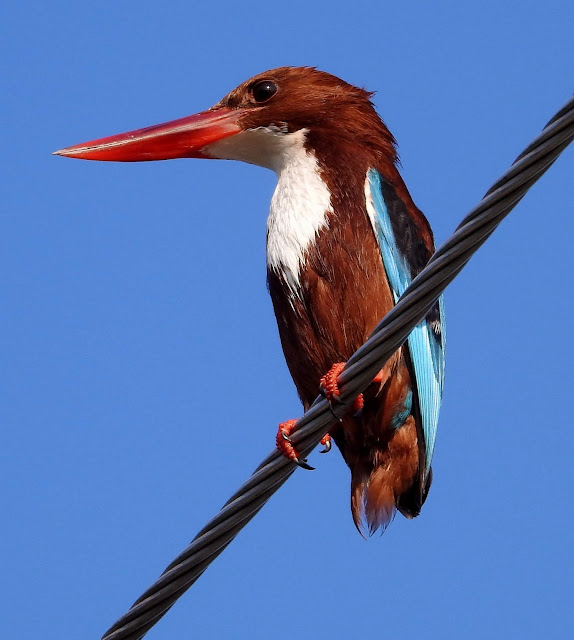This Blog contains Wildlife and Bird Photos from Walks, Safaris, Birding Trips and Vacations. Most of the pictures have been taken with my Nikon P900 and P950X cameras. On the right of the page are labels for each species of Bird/Animal etc. Click on a label and it will show all of the photos taken for that species. I am adding as much information for each species as I can from sources Wikipedia. To see any pictures at full size just click on the picture.
TOTAL PAGEVIEWS
TRANSLATE
Tuesday 17 March 2020
Sunday 15 March 2020
15-3-2020 DUBAI, UAE - DESERT WHEATEAR (FEMALE) (Oenanthe deserti)
15-3-2020 DUBAI, UAE - INDIAN PIED MYNA (Gracupica contra)
Saturday 14 March 2020
15-3-2020 DUBAI, UAE - PALLAS'S GULL (Ichthyaetus ichthyaetus)
14-3-2020 CHANGARAM WETLANDS KERALA, INDIA - PHEASANT TAILED JACANA (Hydrophasianus chirurgus)
Friday 13 March 2020
14-3-2020 CHANGARAM WETLANDS KERALA, INDIA - MARSH SANDPIPER (Tringa stagnatilis)
12-3-2020 KERALA, INDIA - BLACK DRONGO (Dicrurus macrocercus)
4-3-2020 KANHA NAT PARK, INDIA - BLACK STORK (ciconia nigra)
Thursday 12 March 2020
12-3-2020 KERALA, INDIA - GREATER SPOTTED EAGLE (Clanga clanga)
Monday 9 March 2020
9-3-2020 PERIYAR RIVER LODGE, INDIA - GREAT HORNBILL (Buceros bicornis)
The great hornbill (Buceros bicornis), also known as the concave-casqued hornbill, great Indian hornbill or great pied hornbill, is one of the larger members of the hornbill family. It occurs in the Indian subcontinent and Southeast Asia. It is predominantly frugivorous, but also preys on small mammals, reptiles and birds. It has been listed as Vulnerable on the IUCN Red List since 2018. It is known to have lived for nearly 50 years in captivity. Due to its large size and colour, it is important in many tribal cultures and rituals. The Government of Kerala declared it as the official Kerala state bird.
During the breeding season (January to April) great hornbills become very vocal. They make loud duets, beginning with a loud "kok" given about once a second by the male, to which the female joins in. The pair then calls in unison, turning into a rapid mixture of roars and barks. They prefer mature forests for nesting. Large, tall and old trees, particularly emergents that rise above the canopy, seem to be preferred for nesting. They form monogamous pair bonds and live in small groups of 2-40 individuals. Group courtship displays involving up to 20 birds have been observed.
The female hornbill builds a nest in the hollow of a large tree trunk, sealing the opening with a plaster made up mainly of feces. She remains imprisoned there, relying on the male to bring her food, until the chicks are half developed. During this period the female undergoes a complete moult. The young chicks have no feathers and appear very plump. The mother is fed by her mate through a slit in the seal. The clutch consists of one or two eggs, which she incubates for 38–40 days. The female voids feces through the nest slit, as do the chicks from the age of two weeks. Once the female emerges from the nest, the chicks seal it again.
The young birds have no trace of a casque. After the second year the front extremity separates from the culmen, and in the third year it becomes a transverse crescent with the two edges growing outwards and upwards, while the anterior widens to the width of the rear end. Full development takes five years.








%20(Oenanthe%20deserti)%2020.jpg)



%2010.jpg)



































